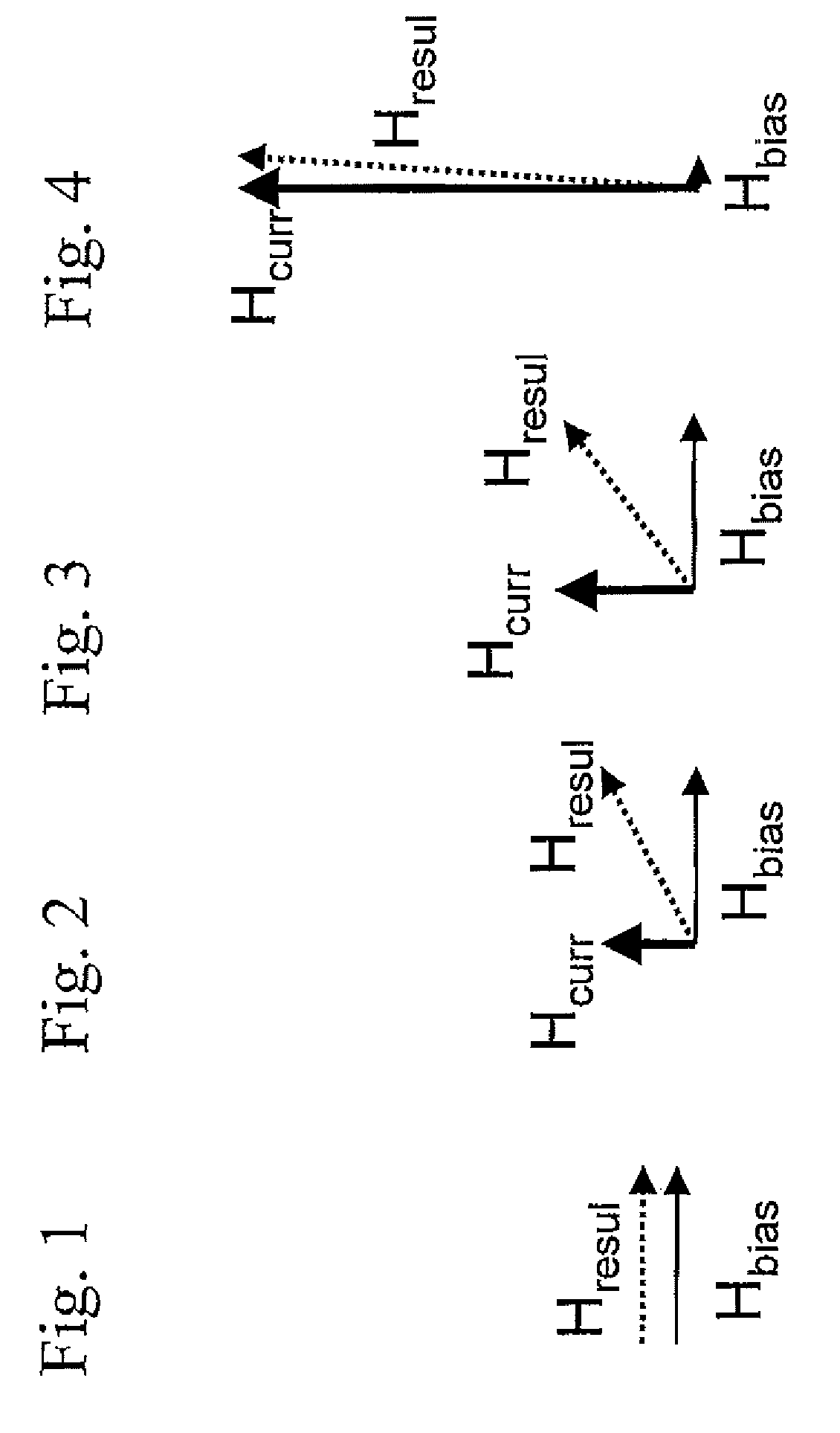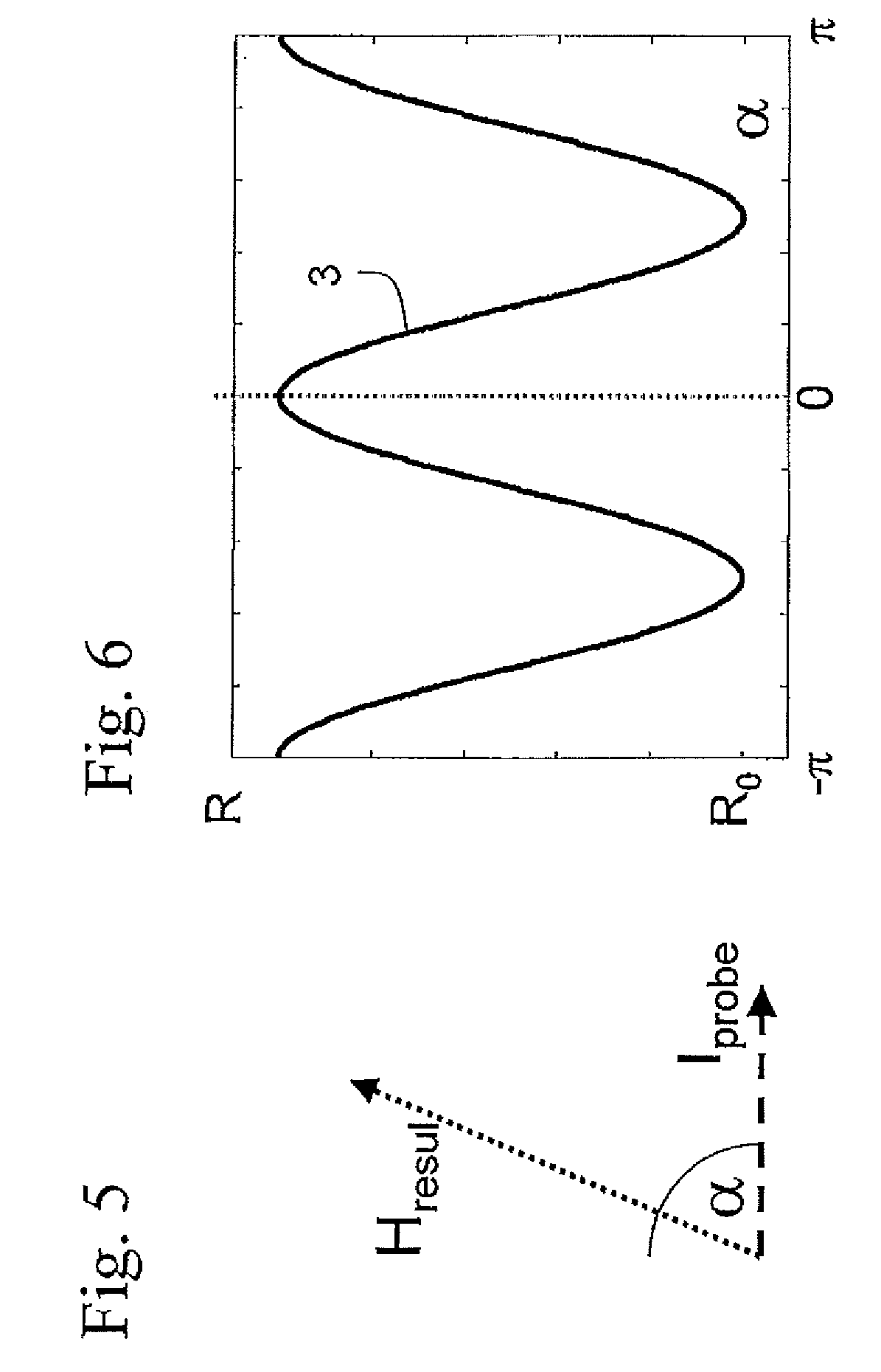Magnetoresistive sensor arrangement for current measurement
a current measurement and magnetoresistive technology, applied in the direction of voltage/current isolation, resistance/reactance/impedence, instruments, etc., can solve the problems of inability to interpret signals unambiguously, invert signals, etc., to achieve stable magnetization, eliminate offset and hysteresis problems, and high angular sensitivity of measurement signals
- Summary
- Abstract
- Description
- Claims
- Application Information
AI Technical Summary
Benefits of technology
Problems solved by technology
Method used
Image
Examples
Embodiment Construction
[0043]A magneto-resistive element used in a magnetoresistive sensor is an object that changes its resistance as a function of the direction of its magnetization with respect to a small probe current that is sent through the element. The resistance depends approximately on the cosine-square of the angle between this probe current and the magnetization of the material. If the current and the magnetization point into the same direction the resistance will be maximal. If the angle between the current and the magnetization is 90 degrees the resistance will be minimal. The device is mounted such that the probe current is tilted at 45 degrees with respect to a main magnetic field, which is to be measured, and a bias magnetic field is tilted another 45 degrees further at 90 degrees with respect to the main magnetic field. With this the resistance of the magneto-resistive element is sensitive to the main magnetic field up to the point where its magnitude is equal to the magnitude of the bias...
PUM
 Login to View More
Login to View More Abstract
Description
Claims
Application Information
 Login to View More
Login to View More - R&D
- Intellectual Property
- Life Sciences
- Materials
- Tech Scout
- Unparalleled Data Quality
- Higher Quality Content
- 60% Fewer Hallucinations
Browse by: Latest US Patents, China's latest patents, Technical Efficacy Thesaurus, Application Domain, Technology Topic, Popular Technical Reports.
© 2025 PatSnap. All rights reserved.Legal|Privacy policy|Modern Slavery Act Transparency Statement|Sitemap|About US| Contact US: help@patsnap.com



